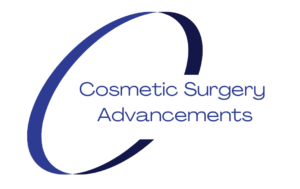Face and Neck Surgery
Facelift
Mini facelift/ lower facelift/ S facelift – a smaller, s-shaped incision around the ear, allows the surgeon to moderately lift and tighten your cheeks, jowls, and jawline.
Recovery
One stitch facelift – small incisions along your hairline, allow the surgeon to subtly lift and tighten your cheeks, jowls, and jawline.
Mid-facelift – small incisions along your hairline and either inside your mouth or in your lower eyelid, allow the surgeon to lift and tighten your cheeks, jowls and jawline, more significantly than with a mini facelift.
Types of full facelift (rhytidectomy)
SMAS facelift – incisions in the hairline behind your ears, allow the surgeon to access the deeper layer (superficial musculoaponeurotic system or SMAS layer) to rejuvenate your entire face
MACS (Minimal Access Cranial Suspension) facelift – requires smaller incisions behind the ears, the SMAS layer is tightened with suspension stitches which is less invasive surgery to rejuvenate your entire face.
Neck lift (lower rhytidectomy)
Neck lifts are normally combined with a facelift and, or facial implants. However, if your neck is your only concern or you are having facial fillers or implants instead of surgery then you may opt to have a neck lift as a sole procedure.
Types of neck lift.
Single Incision Minimally Invasive (SIMI) neck Lift requires one incision in the neck and will tighten the neck and jawline
Platysmaplasty neck lift requires a small incision under the chin and, or in front of the ear lobes, behind the ears, ending in the hairline at the back of the neck. This allows the surgeon to reconstruct and tighten the neck muscles (platysma) and reduce moderate sagging skin.
Cervicoplasty neck lift only requires a small incision under the chin to allow the surgeon to remove excess fat and excess to tighten the neck and jawline.
Recovery
Swelling and bruising will normally disappear within 4 to 6 weeks.
There may be residual swelling for up to 3 months.
Risks and complications:
- Infection.
- Hematomas & seromas.
- Necrosis (death of skin cells).
- Loss of skin or hair.Change in skin colour (hyperpigmentation).
- Nerve damage.
Thread lifts
Types of threads:
Polydioxanone (PDO) made from a synthetic biodegradable polymer which is absorbed over 6 months and triggers fibroblasts to produce more collagen.
Polylactic acid (PLA) made from a biocompatible polymer that is reabsorbed and triggers fibroblasts to produce more collagen over a longer period of time than PDO threads.
Polycaprolactone (PCA) made from bio-absorbable, monofilament of synthetic origin (caprolactone)to create a fibrotic reaction that will continue to lift and stretch the skin and soft tissues after the threads have been reabsorbed.
Recovery
Swelling and bruising normally subsides within 7 days,
Risks and complications:
- Hematomas.
- Infection.
- Asymmetry.
- Extrusion or migration from the original placement.
- Irregularities in the surface of the skin.
- Necrosis (death of skin cells).
Eye rejuvenation procedures
As a person ages, the skin around the eyes loses its elasticity. It may develop into loose folds of skin on the upper eyelids and cause deep creases under the lower lids. The muscles in this area may also slacken so that fat around the eye bulges forward and makes the lower eyelids appear baggy. The removal of excess skin, fat or muscle from around the eye can give a more alert and youthful appearance.
Blepharoplasty (ptosis repair)There can be several operations used to treat ptosis. The most common surgery used to treat ptosis is done using an incision in the eyelid crease, this method is called, levator aponeurosis advancement.
Recovery
Risks and complications:
- Infection.
- Hematomas & seromas.
- Necrosis (death of skin cells).
Brow lift
A brow lift requires incisions above the brow, in the hairline and will smooth and tighten the brow, eyebrows and upper eyelids. A brow lift may be necessary, as an integral part of treatment for the correction of ptosis. This will be combined with Blepharoplasty surgery, to ensure the best results.
Recovery
Risks and complications:
- Infection.
- Hematomas & seromas.
- Necrosis (death of skin cells).
Liquid facelift, fillers, and anti-wrinkle injections
Liquid facelift refers to the filler being injected into multiple areas to give the appearance of smoother, tighter, lifted skin without surgery.
There are various fillers and anti-wrinkle injections available and before going ahead you should always find out the manufacturer and the ingredients of the product you are considering. Your consultant should confirm what charges will be incurred if there are any complications and provide you with this and all the risks and complications in writing.
Recovery
Fillers and anti-wrinkle injections may cause bruising and swelling which will normally subside within a week
Risks and complications:
Will vary depending on the substance used – your consultant should give you a complete list
Infection
Skin resurfacing
Skin resurfacing can be done using various methods including:
- Lasers.
- IPL Photorejuvenation.
- Chemical Peels.
- Microdermabrasion.
- Dermabrasion.
- Microneedling.
Risks and complications:
- Infection.
- Scarring.
Chemical (acid) peels – there are various types of acid peels that contain different active ingredients separated into three strengths. You should always find out the manufacturer and the ingredients of the peel and your consultant should confirm what charges will be incurred if there are any complications. This information should be provided with all the risks and complications outlined, in writing.
Types of chemical peels:
Superficial – Removes top layer of skin, skin will feel red, sore and tight for between 4 to 7 days
Medium – Penetrates the middle layers of skin, causing, blistering and flaking skin for up to 7 days and redness may take a number of months to completely subside.
Deep – Penetrates the deeper layers of skin, causing blistering and flaking skin for up to a month and redness may take a number of months to completely subside.
Risks and complications:
- Infection.
- Change in skin colour (hyperpigmentation).
- Heart, liver, or kidney damage (deep peels only).
Face implants
There are various types of facial implants that can enhance and define the contours of the face, jawline and chin. Face implants are most often made from solid silicone.
Chin and jawline implants come in various shapes and can be used to enhance your chin and, or define your jawline.
Cheek implants are used to give your face more contour, They can help to tighten loose skin and, or give the appearance of more defined, prominent cheekbones.
Lip implants are a permanent solution to give you bigger, fuller and or more shape and can be made from silicone, expanded polytetrafluoroethylene or with a dermis graft.
Recovery
Swelling and bruising will normally disappear within, 1 week for lip implants and 2 weeks for all other types of facial implants.
Risks and complications:
- Infection.
- Scar tissue formation.
- Hematomas & seromas.
- Necrosis (death of skin cells).
- Implant extrusion.
Liposculpture
Liposculpture under the chin can help to define facial features
Recovery
Swelling and bruising will normally disappear within 1 to 2 weeks.
Risks and complications:
- Infection.
- Hematomas & seromas.
- Necrosis (death of skin cells).

